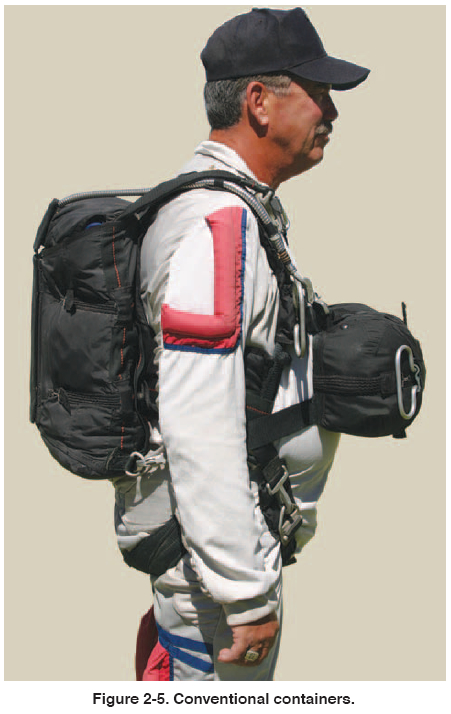Chapter 2
CONSTRUCTION CONCEPTS AND TECHNIQUES
TS-100 describes the various ram-air construction methods
such as half-cell chordwise, full-cell “I” beam chordwise,
full-cell interlocking “T” chordwise, and spanwise
configurations. When learning the various construction
methods, the beginning rigger can become confused as to
how the seams are folded together. Seeing the schematic
diagrams of the various configurations can help in the
repair sequence.
Round parachute construction is divided into two primary
techniques: bias and block construction. Bias construction
is most prevalent in the early parachutes and military
designs. It is generally the stronger of the two techniques
due to its ability to stretch more during opening. In bias
construction, the fabric is cut and sewn so that the warp
and filler threads are at 45 degrees to the centerline of the
gore. A typical example is the 28' C-9 canopy.
Block construction is where the warp threads of the panels
are parallel to the hem of the canopy. Block construction
gained in popularity in the lightweight sport reserves of the
1970s and 1980s. They were easier to build and packed
smaller. An example of this design is the Phantom/Aerostar
canopies, manufactured by National Parachute Industries,
Inc.
OPERATIONAL THEORY
The rigger must have knowledge of how the parachute
functions. Without this, the rigger may not be able to
assemble the correct components so that they function as
a complete assembly. While the manufacturer may specify
what components are to be used with their particular
design, with the vast numbers of products on the market
today, there are an infinite number of combinations being
used by the skydiving community. While seeming to be
compatible with each other, many designs have subtle differences
that affect their performance and operation.
MATERIALS
The materials used in construction have changed over the
last several years. This has resulted in better performance
and durability. The use of incorrect materials can have a
detrimental effect on the opening, flying, and landing
characteristics of the parachute. The growth in popularity
of the ram-air canopies in the 1970s required new fabrics
for the designs to function. Very low permeability fabric
was necessary for the canopy to remain inflated and maintain the aerodynamic airfoil shape. To reduce the drag
created by the suspension lines, newer lightweight, and
high-strength materials were used. First Dacron®, followed
by Kevlar®, and now Spectra® and Vectran®.
While reducing the line bulk and drag, these materials
have introduced newer problems into the designs.
The ultra-low permeability fabrics inflate faster, and have
almost zero stretch. As a result, the opening forces
increase considerably. These effects have contributed to
newer packing and deployment methods to reduce the
loads on the parachutist and harness. These, in turn, affect
the design of the container systems. Using this as an
example, the rigger can see the chain of cause and effect
in the design process. Complete coverage of materials is
presented in chapter 3 of this handbook.
DAMAGE
Damage patterns identified during the inspection of
canopies can highlight problems caused from packing or
incorrect use. By being able to identify these patterns, the
rigger can provide the user with correct technique and,
thereby, prevent possible injury or death. In addition, the
rigger can provide valuable feedback to the manufacturer
of potentially serious problems with new designs once
they have been subjected to real world conditions. While
manufacturers conduct extensive testing programs before releasing new products to the market, very often, subtle
problems do not arise until the parachute has been in the
field for an extended period of time.

| 
